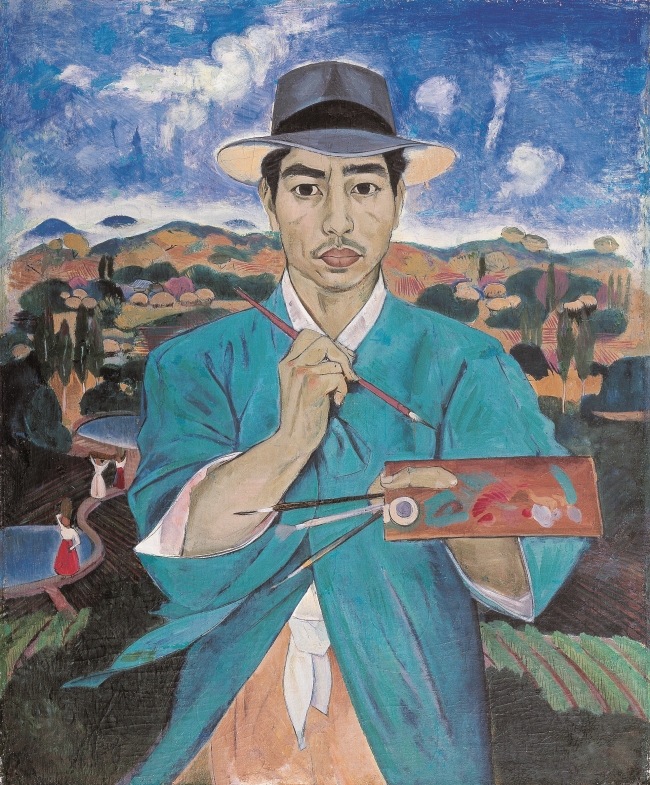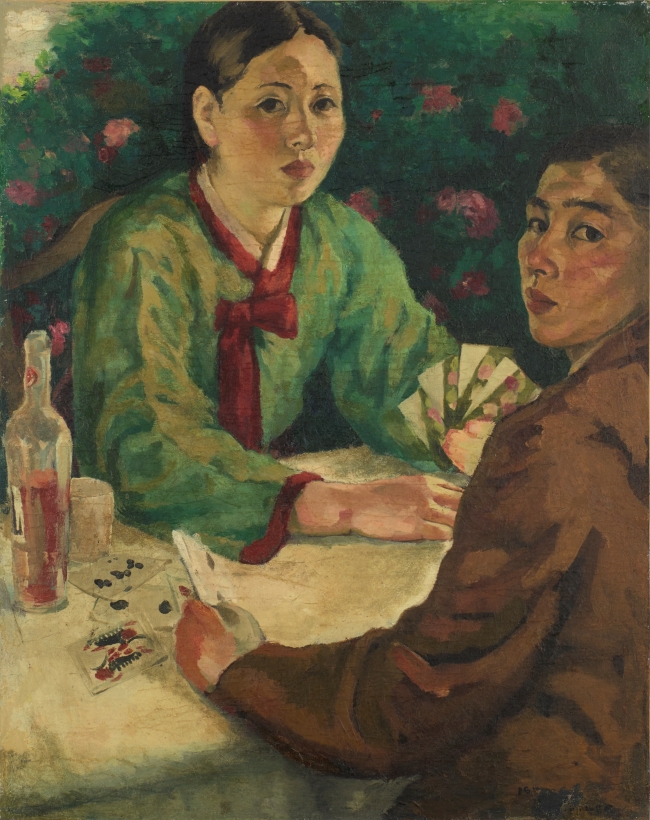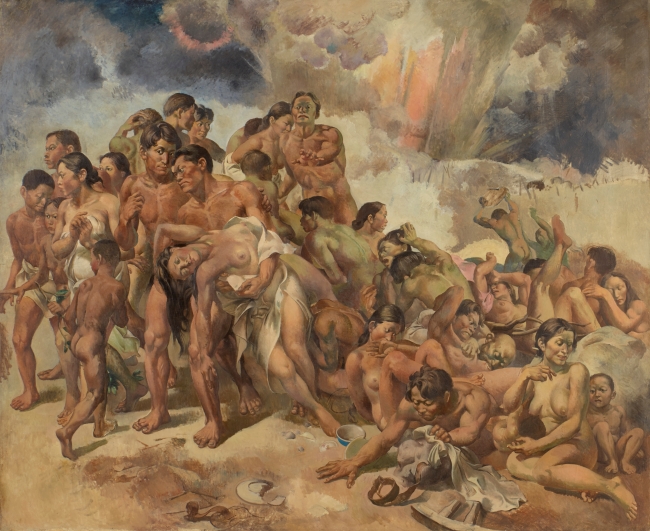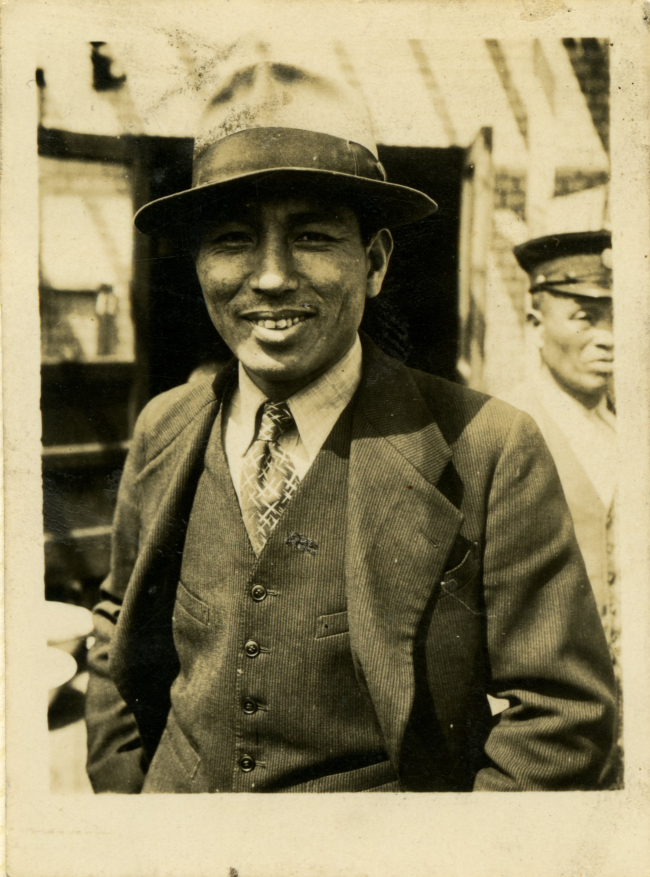Exhibition sheds light on tragic artist
MMCA presents works of Lee Quede, Korean modern art pioneer and defector to North
By 이우영Published : Aug. 6, 2015 - 17:36
When the 38th Parallel was drawn to divide the Korean Peninsula after the Korean War, many people had to make a tough decision: Which side would they support?
Artist Lee Quede faced the question at a prison camp where he was jailed after being captured by South Korean soldiers for being cooperative with North Korean soldiers who briefly occupied Seoul.
The artist, born in 1913 in the small town of Chilgok, South Gyeongsang Province, chose to go to the North in 1953, leaving his wife and four children behind in the South.
Artist Lee Quede faced the question at a prison camp where he was jailed after being captured by South Korean soldiers for being cooperative with North Korean soldiers who briefly occupied Seoul.
The artist, born in 1913 in the small town of Chilgok, South Gyeongsang Province, chose to go to the North in 1953, leaving his wife and four children behind in the South.

Amid the anticommunism propaganda by the South Korean government, his name immediately became taboo. Until 1988, he had never been called by his full name, but existed as Lee X-de.
His artistic activities in North Korea are very little known. Art historians speculate he was at odds with Kim Il-sung, who killed his older brother, a scholar and journalist who arrived in the North before Lee.
In both Koreas, Lee’s name had been crossed out from history.
His name resurfaced in 1988 when the South Korean government lifted the ban on artists who defected to North Korea, allowing the South Korean art world to discover and study Lee’s artistic legacies.
Twenty-seven years later, an exhibition that sheds new light on the unfortunate artist is being held at the National Museum of Modern and Contemporary Art, Korea.
The exhibition includes 400 works he produced over the span of 20 years from 1930 to 1950 -- the time he spent in the South. This period coincides with major events in the turbulent modern history of Korea from Japanese colonial rule, independence and the Korean War.

“Lee Quede is remembered with the tragic life. But he deserves further study and attention as he demonstrated clear, positive, passionate attitude toward art,” said Kim Ye-jin, curator of the exhibition.
Lee had strived to establish an independent style of Korean art amid influences from the West, Japan and China. The goal to create a new style also reflected his wish to see an independent Korea when the country’s political destiny was greatly swayed by foreign powers.
Through many portraits, he depicted Koreans’ strong wish and will for independence. In the beginning, he mainly portrayed his wife. As his style developed, he reflected the independent and strong spirit of Korean women through his wife’s elegant face.
Lee’s love for his wife is one factor that left questions about his defection to the North. The exhibition displays letters Lee wrote to his wife while he was in the prison camp, showing his sincere love and strong wish to return home.
One of the highlighted works is a large painting depicting a group of people half-nude, expressing their anticipation and joy for the prospect of independence. The masterpiece is considered the best representation of the realistic expression -- in true Korean style -- that he envisioned.

Lee’s realistic depiction of the people is based on his great interest in anatomy, which he studied at Imperial Art College in Tokyo. He later made an anatomy book for artists for a jail mate while a prisoner of war.
Lee had been a political victim amid the ideological conflicts that emerged after the Korean War. Lee was known to have personally resisted joining any group with a political leaning.
“There are many speculations to explain his defection to the North. Some say Lee’s decision to go to the North was a matter of survival,” said Kim.
“It remains a mystery why he chose to go to the North, leaving his dear wife. We are left with the tasks of learning more about his life after the defection and restoring his legacies, which had a great influence on the Korean art world,” Kim added.

The exhibitions runs through Nov. 1 at the Deoksugung Palace museum of the MMCA. For more information, visit www.mmca.go.kr.
By Lee Woo-young (wylee@heraldcorp.com)








![[Graphic News] More Koreans say they plan long-distance trips this year](http://res.heraldm.com/phpwas/restmb_idxmake.php?idx=644&simg=/content/image/2024/04/17/20240417050828_0.gif&u=)
![[KH Explains] Hyundai's full hybrid edge to pay off amid slow transition to pure EVs](http://res.heraldm.com/phpwas/restmb_idxmake.php?idx=644&simg=/content/image/2024/04/18/20240418050645_0.jpg&u=20240419100350)





![[From the Scene] Monks, Buddhists hail return of remains of Buddhas](http://res.heraldm.com/phpwas/restmb_idxmake.php?idx=652&simg=/content/image/2024/04/19/20240419050617_0.jpg&u=20240419175937)

![[KH Explains] Hyundai's full hybrid edge to pay off amid slow transition to pure EVs](http://res.heraldm.com/phpwas/restmb_idxmake.php?idx=652&simg=/content/image/2024/04/18/20240418050645_0.jpg&u=20240419100350)

![[Today’s K-pop] Illit drops debut single remix](http://res.heraldm.com/phpwas/restmb_idxmake.php?idx=642&simg=/content/image/2024/04/19/20240419050612_0.jpg&u=)